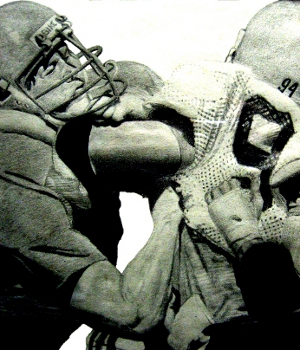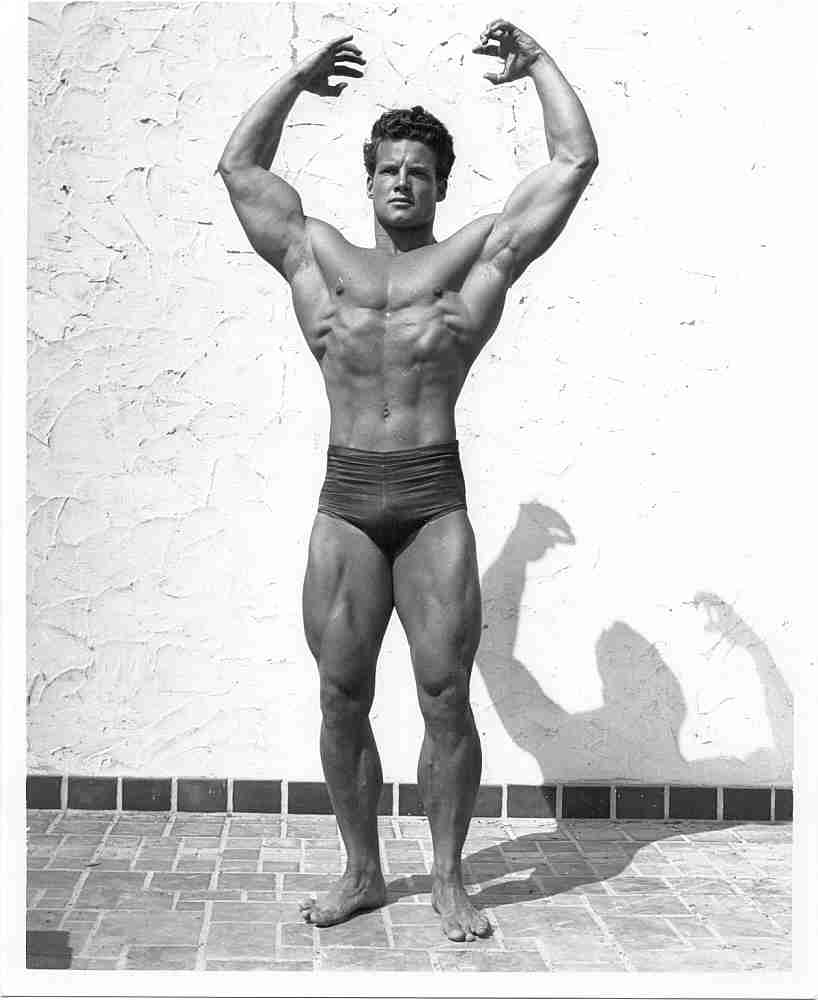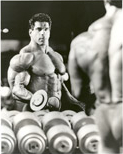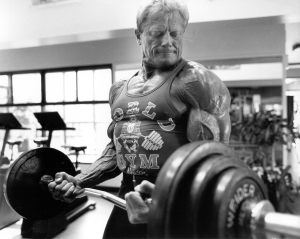This article focuses on the core fundamentals of weightlifting: How promote muscle growth and avoid "over-training".
Whether you are a beginner or an elite athlete, you must keep these fundamentals in mind if you want to experience continual progress.
For perspective though, here's an unpopular truth - Your diet is much more important than your workout routine:
This is hard to believe for most, and that's why most people never reach their fitness goals. Please refer to our article titled Practical 'Weight-loss' Tips for eating tips that will maximize muscle growth and reduce fat.
After you get your diet straightened out, use these tips to get the most out of your workouts.

HERE ARE SOME WEIGHTLIFTING PRINCIPLES EVERYONE SHOULD KEEP IN MIND:
Warm up to avoid injury:
Put a rubber band in the refrigerator for an hour, then take it out and stretch it. It breaks much easier, right? That can happen to your muscles if you work out before warming up!
When you 'warm up' you're literally heating up your ligaments, tendons and muscles. You're also circulating blood and nutrients to those areas. My warm-ups involve little more than a brisk walk (or a slow jog), extremely mild stretching and/or using very light weights to warm the area(s) of focus for the workout.
If you work out in the afternoon or evening, your warm up might only take 5 minutes. For early morning workouts, you'll need 15 minutes at a minimum, maybe 30.
If you feel lethargic or cold, you're probably not warmed up yet!
If you tear a muscle while working out, you're probably not warmed up yet. : )
Don't do as I do!
As I give this advice, I'm reminded of all the times I've skipped warm-ups to save time. This has often led to pulled muscles or worse!
Most of my injuries happened in the morning, so I avoid morning workouts. Afternoon or evening workouts take less time, because you can get by with a shorter warm-up.
To maximize muscle growth, split your routines by body part(s):
 This is just a suggestion. If you just want to tone up and reduce fat, circuit training(1) is fine. Circuit training is also good for beginners:
This is just a suggestion. If you just want to tone up and reduce fat, circuit training(1) is fine. Circuit training is also good for beginners:
If you're just starting out, hit the circuit for about a month, or until your strength gains start to level off.
Some people like to hit a body part really hard once a week; This seems to promote muscle growth for intermediate and advanced lifters, so I recommend it. If I have time, I also do a recovery routine or 'speed training'(2) later in the week. I usually don't have the time, though!
Here's one of my favorite splits, but that doesn't mean it's the best:
Monday: Chest and Shoulders, including rear delts
Wednesday: Arms (including forearms)
Friday: Back! and rear delts (rotator cuff)
Saturday: Legs
Here's another option that is a little more intense, yet flexible:
Day 1: Push
Day 2: Pull
Day 3: Legs
Repeat
Rest Day? Whenever life gets in the way, take a rest day then get back on the routine the next day.
I spend 30-45 minutes per workout, including the warm-up! That's about all the time I have, and it's all the time you need, unless you're a pro athlete. Some trainers recommend 45 minutes (but no more than an hour).
People split body-part workouts in many different ways, and there are tons of theories about which one is best. From my experience, eating habits are more important than what you do in the gym. I can't stress this enough.
Focus on one body part for several weeks at a time:
 I learned this principle from Lou Ferrigno's book(3), and I couldn't agree with it more! It's more of an advanced technique, but I placed it here to help explain my split routine above. You may notice that I'm hitting rear delts twice a week. That's my area of focus right now.
I learned this principle from Lou Ferrigno's book(3), and I couldn't agree with it more! It's more of an advanced technique, but I placed it here to help explain my split routine above. You may notice that I'm hitting rear delts twice a week. That's my area of focus right now.
This technique promotes growth in a needed area. IE: A powerlifter might have a weakness that hurts their bench-press total; a dock-worker might have shoulder soreness because his chest is over-developed; or a person could be constantly twisting their ankles because of weak calves.
In theory, you can hit one body part harder without becoming over-trained. If you're eating right, that muscle-group will respond.
Maintain good balance to avoid injury:
Make sure your workouts don't consistently focus on one area over another. Don't just focus on your chest and front shoulders, work your back and rear delts as well. If you're successful at building your biceps, but you ignore your triceps, you could end up injuring your tris.
One of the most common injuries for runners is a pulled hamstring. This often happens because their muscles become out of balance. Be aware that this can happen, and take steps to avoid it.
Muscle imbalance happens more often for people who are successful in the gym (and for laborers who perform some type of repetitive motion). If you don't eat right, you won't have much success in the gym, and you won't have to worry about this problem.
Am I getting the point across?
Diet is important if you want to achieve your fitness goals.
Don't work out again if you're still sore:
IE: If you're still sore from last week's back work-out, don't hit your back again! It won't help. Recovery time is important; that's when growth happens!
If you have enough discipline, you can help the growth process by doing a "recovery workout"; otherwise, just rest the muscle group. If you're sore from last week's workout, and it's time for the next one, try this:
Simple Recovery Workout:
Do the exact same work-out as last time, but with less weight.
- Use 50% of the weight you used before, even for the warm-up.
- Maintain excellent form.
- Do the exact same number of sets and reps.
- Use the same speed of motion as last week; don't jerk the weights around.
- Rest for the same amount of time between sets.
After a few minutes of a recovery workout, your muscles will likely stop hurting (perhaps for the first time all week). It's important that you don't give in to temptation and start piling on the weight.
Lingering soreness can be a sign that your workout is too intense. Pushing yourself too hard in the gym is a waste of time, so you should scale things back.
If you pay attention, you'll notice the strongest guys in the gym are not the ones who work the hardest. The strongest (drug-free athletes) in the gym are the ones who eat right and work smart. Here's a favorite quote from an elite Powerlifter I talked to at Power Shack in Westerville, Ohio:
"I work out for about 30 minutes, then I sit back and watch everyone else over-train!".
Manage your Stress:
Stress will hinder your progress in the gym, and it will cause your body to accumulate fat. When you are stressed, your muscles become constricted, and they won't accept nutrition. That nutrition has to go somewhere, so what doesn't flush out of your system is accumulated as fat. Aside from this purely superficial point, stress is increasingly being recognized as the cause of a wide variety of illnesses; so you'll be a healthier person if you learn to de-stress your life.

Lifting weights can be relaxing, and it is definitely good for you, but it can also be stressful if you're pushing your limits. Here are some tips to help manage the stress you face in life and in the gym:
- Get plenty of sleep. Sleeping helps your body recover from a number of things, including stress, including a hard workout. Sleep is good!
- Learn to relax!!!! Develop habits that create a less stressful atmosphere for yourself and others around you. If you don't have a clue how to do this, talk to a therapist. I've done it and I highly recommend it!
- Learn from others. If you know someone who seems to handle stress well, they're either faking it, they're on medication, or they have some aspects of life figured out. If it's the latter, you'd do well to emulate them. Ask them how they do it. If they are self-aware, they should be able to explain it to you, and they'll probably be glad to help.
- Cool down after a workout. If you have time, spend 10 to 20 minutes to cool down after a workout. When I'm finished working out, I like to do one or two sets of each exercise with much lower weights, then I like to take a 15-minute walk. I eat a protein bar while I'm walking. The post-workout meal is very important!
- Take a walk! A 30 to 45 minute walk can be very relaxing. In the time it takes to watch a sitcom, you could take a short walk and dump your stress. Walking is a terrific stress reduction tool, and it helps with recovery from a workout!
- Get a Massage. If you can afford it, get a massage on a regular basis. It's very relaxing, and it helps your muscles recover and get stronger.
- Develop your spiritual life. Getting in touch with the true nature of reality is important, and it's stress relieving. I believe it's ultimately stressful to ignore big issues like "Is there a God?", or "Why am I here?".
I have a theory that stress results went our experience doesn't line up with our expectations.
IE: When our subjective understanding of the universe is different than its objectively true nature, stress can result. Your attitude will improve as your understanding of reality improves (None of us have an accurate read on reality though, IMO). - Don't take yourself too seriously. Zealots are the among the most stressed out people on the planet, based on my observation. Zealots take many forms, but they are usually adamant that everyone follow their rules.
Live and let live! Your life and health will improve as a result.
I spent a lot of focus on stress because it's very important. I'd put it 3rd on the priority list, behind diet and exercise.
Use good form. Concentrate on the muscle you're working.
I know this sounds silly, but it works! Certainly use good form, but there's more to it than just that. Think about the muscle you're working. Don't just let it do the work, will it to do the work. Think about the motion that it's initiating. Here are a couple examples:
Certainly use good form, but there's more to it than just that. Think about the muscle you're working. Don't just let it do the work, will it to do the work. Think about the motion that it's initiating. Here are a couple examples:
- 'Good Mornings' (aka Straight leg Deadlifts) work your glutes and hamstring muscles. If the weight isn't too heavy, you can emphasize the use of one area more than another.
- For tricep work, you can concentrate on extending with the inner tricep, or the outer tri. You can decide which muscle does most of the work, within reason of course.
Your mind is powerful. Use it, concentrate. As you do this, you'll begin to notice which exercises best work the muscle groups you'd like to emphasize.
If you can learn to concentrate on your workouts, it will also relieve stress. It's a good way to get your mind off things for a while!
Concentrate.
Choose a rep and set range that's consistent with your goals:
Everyone is different, and we respond differently to exercise. But if you're eating right, you can have some control over how your body will develop, based on how you work out.
1 to 8 reps for strength:
Strength, rather than muscle size, is stimulated this way. This rep range is employed by powerlifters or linemen on a football team. It trains the Central Nervous System to handle larger loads. Muscle size isn't stimulated as much with this kind of training. Consider a power-lifter's ability to bench over twice their body weight, or an alligator's short bursts of strength and speed. They have explosive strength, but not much stamina.
Set Range:
If you're using low weights, 40 to 50% of your maximum lift, you might do 10 sets of 1 to 4 reps. If you're going heavy, you might do 2 to 5 sets.
6 to 15 reps for size:
This rep range emphasizes muscles size, speed, and a mix of strength and stamina. Think of sprinters, bodybuilders, most gym rats, and lions.
Set Range:
You might do 3 to 6 sets with 2 or 3 different exercises per body-part. Sets are done in good form and are seldom taken to failure.
15 or more reps for stamina:
This creates lean muscles with a great deal of stamina. Iron-man competitors, distance runners, swimmers, and gazelles.
Set Range:
You'll want to do 2 to 4 sets, depending on how heavy you're going.
BTW: Suggested set range do not include warm-up sets.
Diet habits are the biggest factor when it comes to muscle growth, but rep and set ranges also play a role.
Mix it up every now and then. Lifters often change their rep and set ranges occasionally to stimulate growth, etc.. Bodybuilders might use a lower rep range to increase strength, then return to the higher rep training more weight than before. That type of cross-training can stimulate growth. Powerlifters will use the higher rep range to work on a relative weakness, or to stimulate muscle growth.
How much should you rest between sets?
It depends on your goals. When Powerlifters and StrongMan Competitors are going heavy (working on stregnth), they rest 5 to 20 minutes between sets.
If you're focusing on muscle growth, 90 seconds to 4 minutes is good.
Bodybuilders and Crossfitters mix it up.
When you see people doing nothing in the gym (sitting around talking), they might be working smarter than you think.
Don't take every set to failure:
I'm using the term "failure" to refer to 'doing as many reps in a single set as possible'. Football recruits are tested on how many times they can bench press 225lbs. This is an example of taking a set to failure.
Almost everyone in the gym is over-training
Over-training restricts growth; it also causes stress. If you persistently over-train, you can create health problems for yourself, including a compromised immune system. Don't over-train; it's such a waste of time!
I suggest you take only one set to failure per gym visit. One or less. If you take 2 to 4 sets approximately 4 reps short of failure, you'll get a better workout, and your body will recover faster. You should not consistently be sore from your workouts 72 hours later. If you are, you're over-training and you may need to scale it back.
Breathe!
Don't hold your breath while lifting heavy weights. Powerlifters do this quite often, but it's not a good idea. Get in the habit of inhaling as you lower the weight, and exhaling as you lift it. This is less stressful on your heart, heart valves, and your head!
I've been at this for years, and I still catch myself holding my breath. It seems to be a natural reaction to straining, but it's not a good idea.
Whether your goal is improved health, becoming stronger, or looking prettier, following these guidelines will make it happen for you.
If you eat right, rest right, and workout properly, you will be successful in the gym.
Please feel free to contact us with specific questions or comments.
Footnotes:
(1) Circuit Training refers to a workout technique where the lifter does one set of an exercise, then moves to the next exercise. The series of exercises (or circuit) is usually organized to create a total-body workout. This should not be confused with super-setting. Super-setting is often part of a split-training routine.
(2) Speed Training can refer to a number of things: We are referring to a powerlifting technique that helps train the Central nervous system to handle greater amounts of weight. This technique was made popular by the famous (infamous?) West Side Barbell club. It's an advanced technique and can cause you to become over-trained very quickly. Handle with care! We cover Speed Training in our article titled "Blast thru Plateaus!"
(3) Mr. Ferrigno's book is among the most concise and honest books I've read about weightlifting and bodybuilding; and I've read dozens of them. The book is titled 'Lou Ferrigno's Guide To Personal Fitness & His Life Story'. It prioritizes principles that work; it doesn't waste your time with hype, fads, or distractions. Lou doesn't sell ab machines!
Research:
It would be impossible to list all the experts and books that helped me reach my own fitness goals.
Here are a few people I admire for their accomplishments, their communication skills, and their commitment to share their knowledge openly and honestly:
Dave Draper
Lou Ferrigno
Jack La Lanne
Hugo Rivera
Kathy Smith
Dr. David Ryan
MItchell Hooper
Brian Shaw

